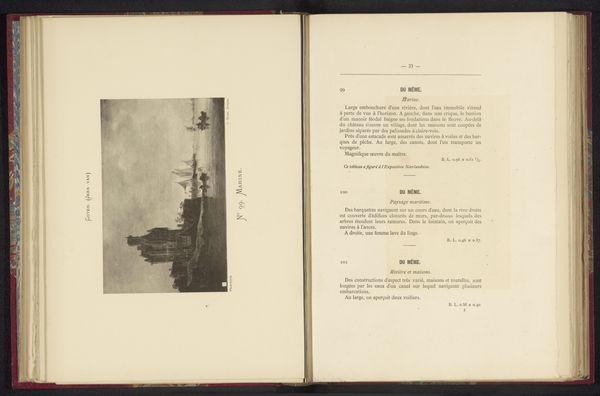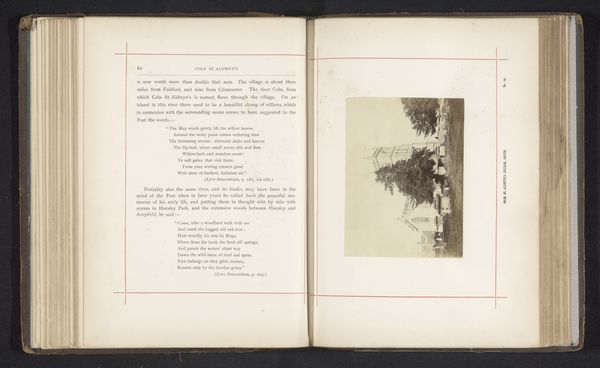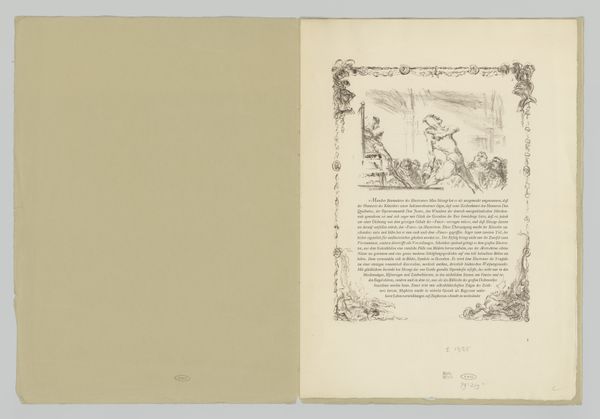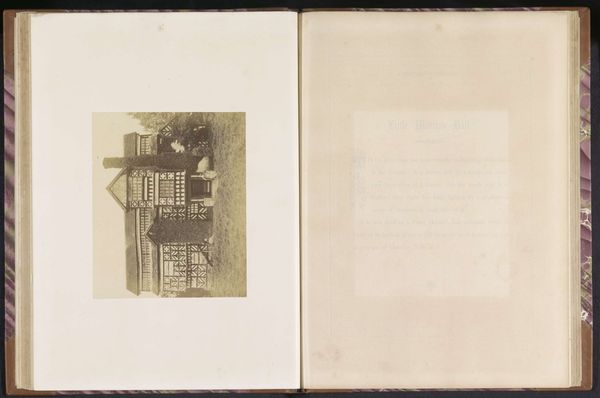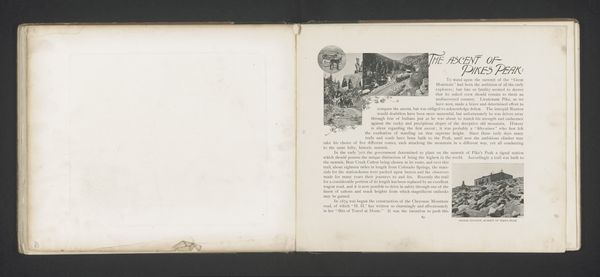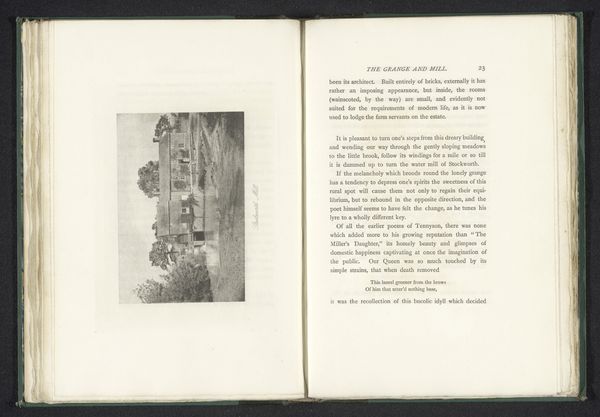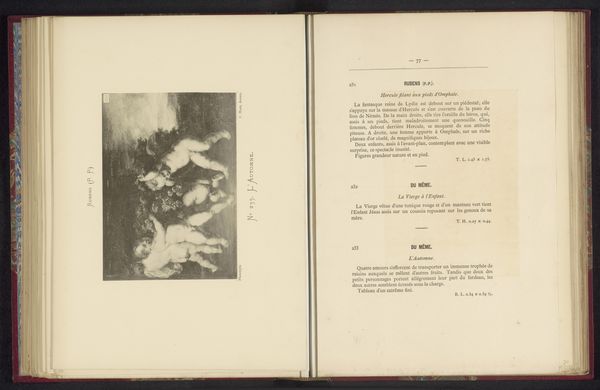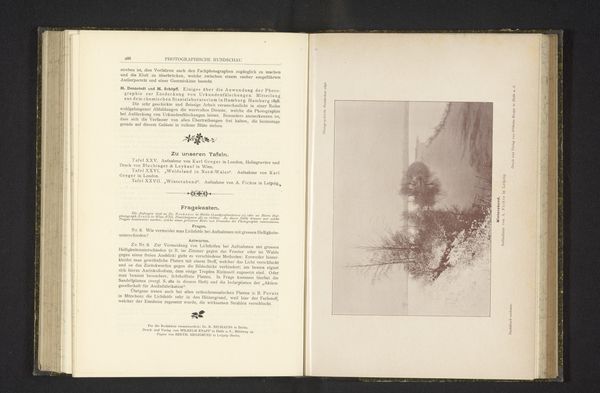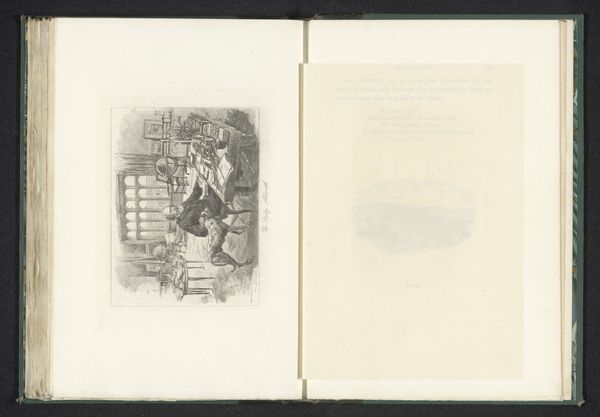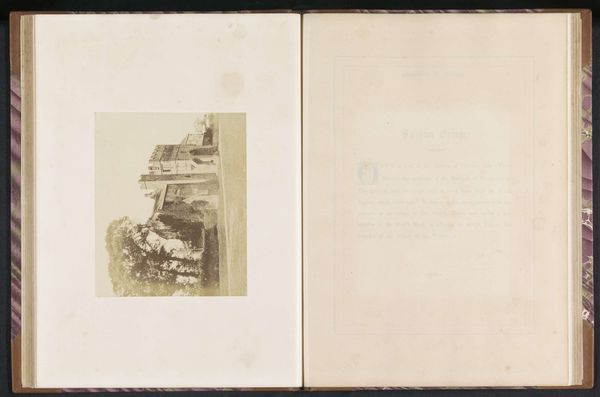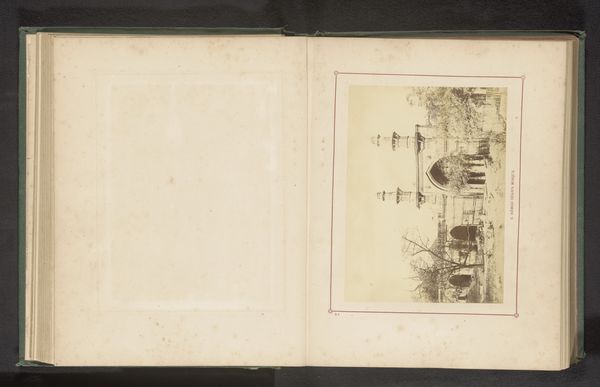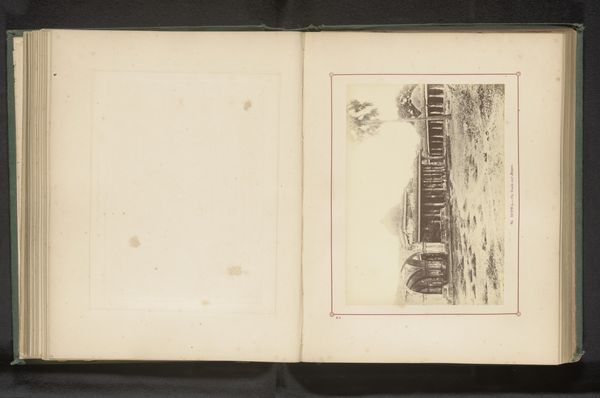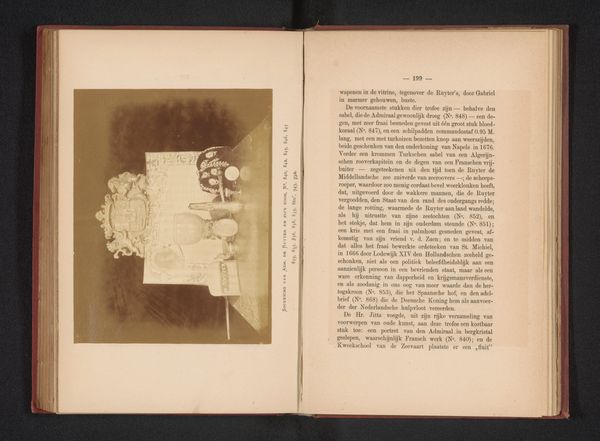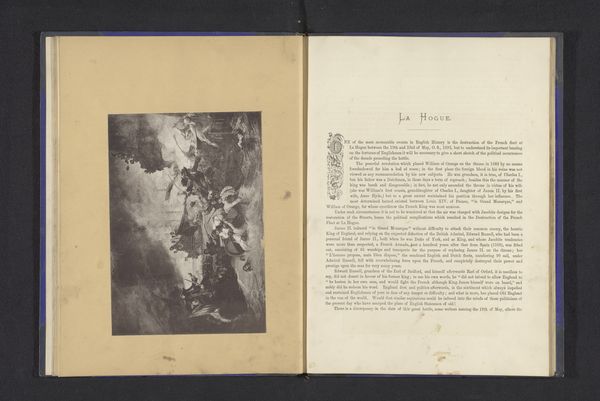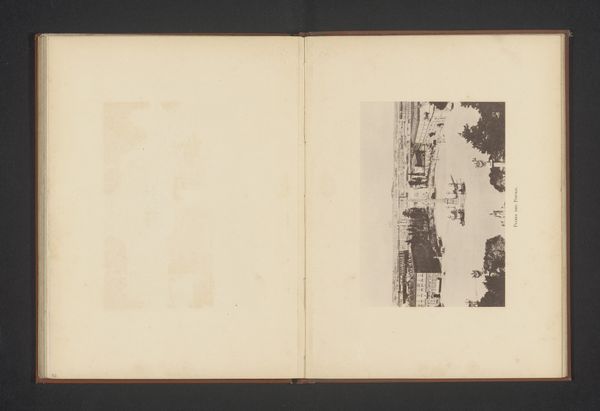
drawing, print, watercolor
#
drawing
#
aged paper
#
toned paper
#
narrative-art
# print
#
sketch book
#
personal sketchbook
#
watercolor
#
journal
#
sketchbook drawing
#
watercolour illustration
#
genre-painting
#
storyboard and sketchbook work
#
sketchbook art
#
watercolor
Dimensions: height 430 mm, width 346 mm
Copyright: Rijks Museum: Open Domain
Editor: This is "Allerlei" by Gerhardus Philippus Zalsman, created sometime between 1869 and 1882. It appears to be a print with watercolor and drawing, almost like pages from a storyboard sketchbook. There are two scenes above some script in the bottom part, almost like stanzas in a hymn. The upper scenes contrast public performance with private torture. How would you interpret it, given its socio-political context? Curator: That’s a keen observation. It’s important to consider this work not just as a set of images, but as a form of visual commentary deeply embedded within the political climate of the Netherlands during that period. These were formative years for public discourse around ideas about public piety and governance, issues visualized in the contrasting scenes and use of what reads like religious hymnody. The scenes present what can be read as a morality tale. What function could a visual broadside such as this serve? Editor: So, you think it could be some kind of political satire, or a commentary on social mores through juxtaposed imagery? And the hymns acting as a familiar reference for the audience, grounding the political statements? Curator: Precisely. Consider how visual culture played a part in constructing Dutch national identity, moral instruction and what role artwork had as a public service medium. It could invite debate and reflection in homes, perhaps even subtly challenging prevailing views. These images seem intentionally designed to stir conversation around duty and governance within the prevailing societal norms. The artist employs readily understandable imageries. This would have made Zalsman's criticism digestible for consumption even among people of reduced means and limited sophistication. Editor: So, looking at it this way, "Allerlei" becomes less of a personal sketch and more of a politically charged statement presented under the guise of relatable visual stories. I guess what appears to be sketchbook work ends up pointing towards something deeper in that society. Curator: Indeed, the format itself participates in a political project, using an accessible medium and format for complex discussions about community. It reminds us that even seemingly simple works can engage with pressing societal matters, opening conversations through an accessible visual rhetoric.
Comments
No comments
Be the first to comment and join the conversation on the ultimate creative platform.
